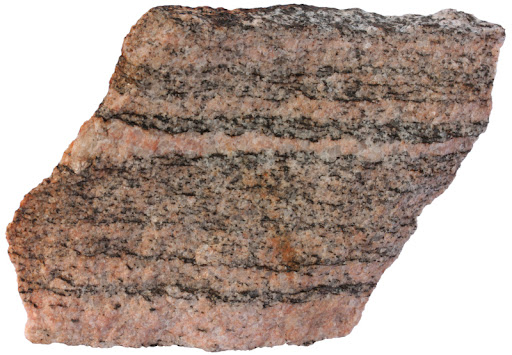This lab took place at the Ocmulgee National Monument (Ocmulgee Indian Mounds). While there, the class studied various types of soil and levels of decay and decaying matter in the woods. The class was also able to study the Indian Mounds.
Friday, December 7, 2012
Blog #4 -- Minerals and Rocks
Granite
Granite is a light colored igneous rock with grains large enough to be visible with the unaided eye. it forms from the slow crystallization of magma below Earth's surface. Granite is composed mainly of quartz and feldspar with minor amounts of micas, amphiboles and other minerals. This mineral composition usually gices granite a red, pink, gray, or white color with dark mineral grain visible throughout the rock.
Gneiss
Gneiss is a rock type that is very widespread in the continental crust, and can also be found commonly on certain surface locations. As with granite, most of the grains are visible from the naked eye. banding in gneiss is a result of mineral segregation into seperate, typically light- and dark-colored layers.
Coquina
Coquina is a sedentery rock that is composed either wholly or almost entirely of the transported, abraded, and mechanically sorted fragments of the shells of either molluscs, trilobites, brachiopods, or other invertebrates. The average size of the composing particles is 2 mm or greater. Coquina can vary in hardness from poorly to moderately cemented.
Quartz
Quartz is the most common mineral on the face of the earth. it is found in nearly every geological environment and is at least a component of almost every rock type. Frequently, it is the primary mineral. It is also the most varied in terms of variety, colors, and forms. This is a result of quartz being so widespread.
Feldspar
A group of rock in which nearly 20 members are recognized; only 9 of these members being well known or common. Those 9 members make up the greatest percentage of minerals found in earth's crust. These rocks are fairly low in symmetry and tend to twin easily. They tend to be blocky and fairly dull.
Hornblende
Hornblende is a complex inosilicate series of minerals. It is not a recognized mineral in its own right, but the name used as a general or field term to reefer to a dark amphibole. It is an isomorphus mixture of three molecules; a calcium-iron-magnesium silicate, an aluminum-iron-magnesium silicate, and an iron-magnesium silicate.
Mica
This group includes several closely related materials having close to perfect basal cleavage. All are monoclinic and all are similar in chemical composition. Their nearly perfect cleavage is explained by the hexagonal sheet-like arrangement of its atoms.
Topaz
Topaz is an aluminum, hydroxy-flourine silicate. Strong chemical bonding makes it the hardest of the silicate minerals. It is most commonly colorless; however it does have many varieties of colors.
Subscribe to:
Comments (Atom)
